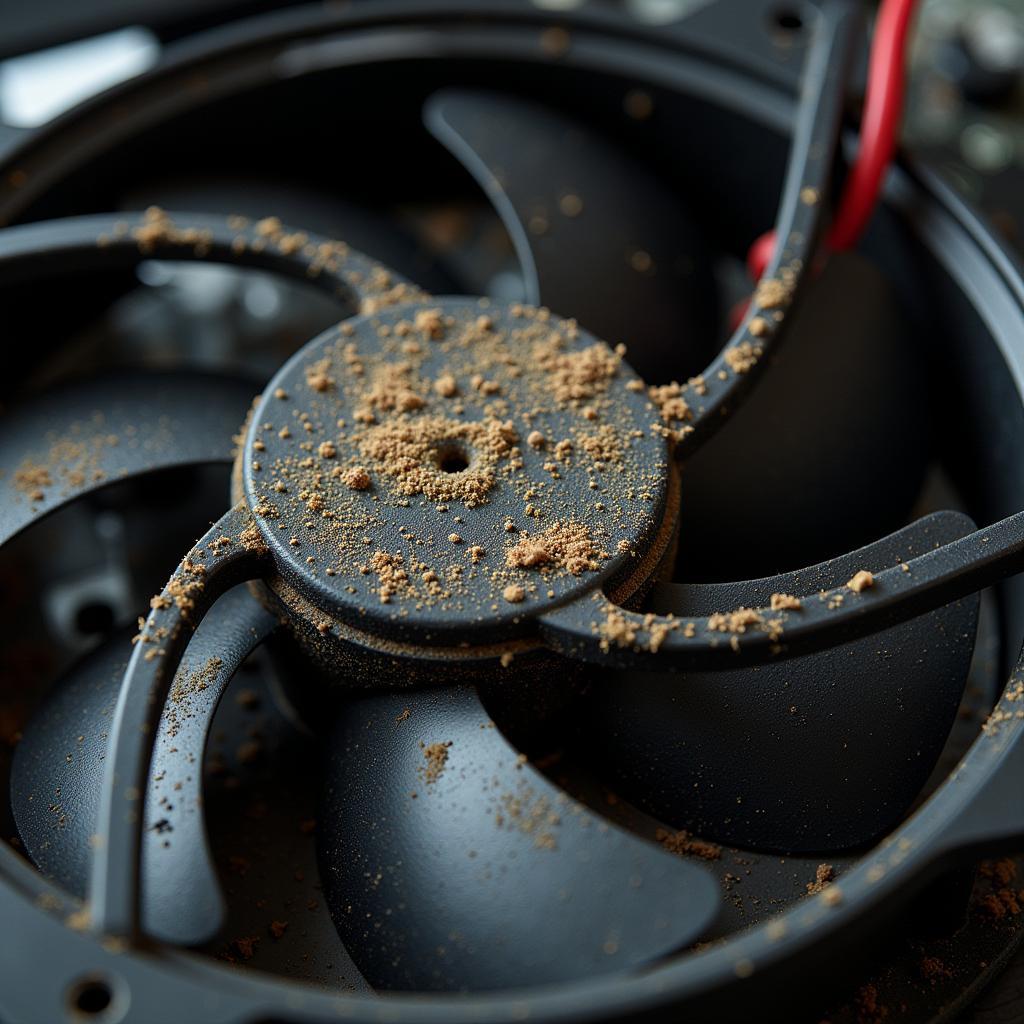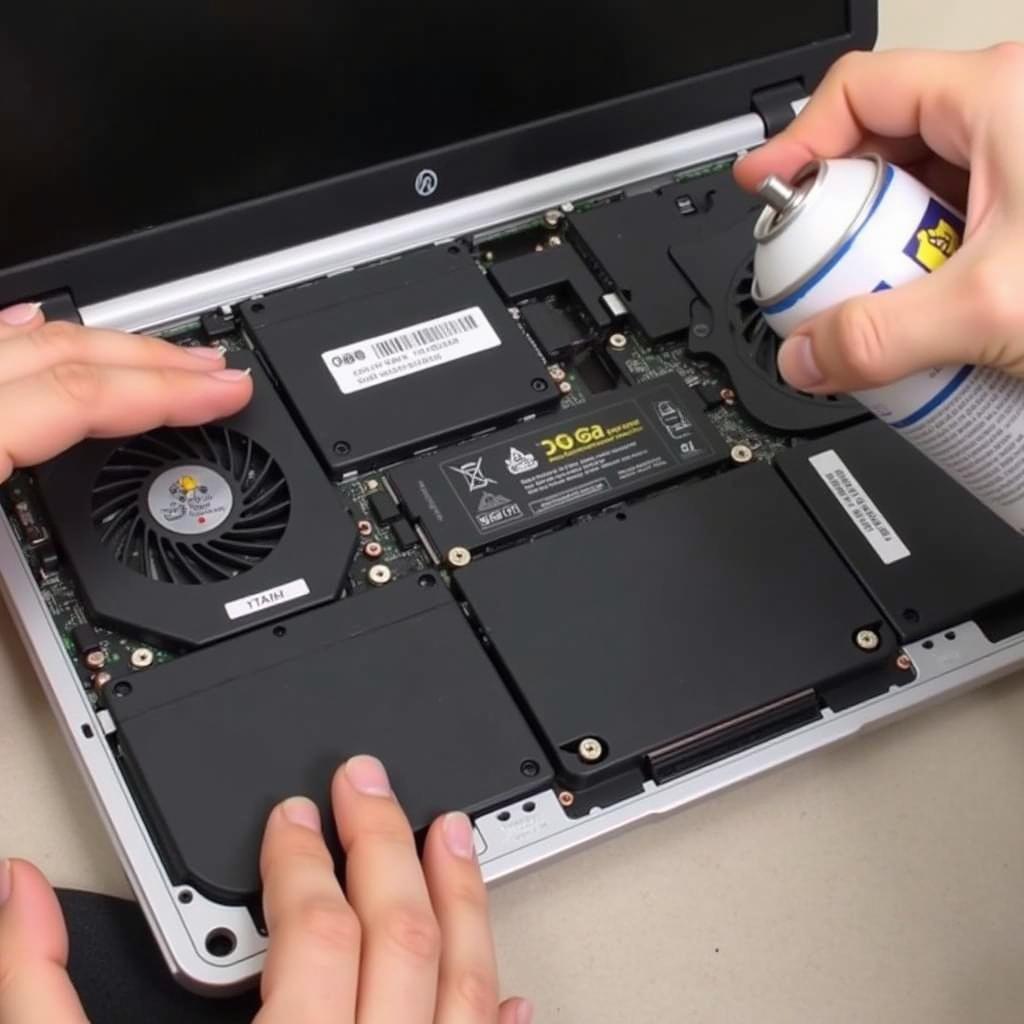The dreaded “fan error” message flashing on your screen can be a real mood killer, especially when you’re all set for a tech-powered experience. But before you toss your device out the window, take a deep breath. This comprehensive guide will walk you through the common causes of fan errors, how to troubleshoot them, and most importantly, how to prevent them from cramping your style in the future.
Decoding the Fan Error: What’s Going On?
 Computer fan working overtime with visible dust buildup
Computer fan working overtime with visible dust buildup
At its core, a fan error signals that your device – whether it’s a laptop, gaming console, or even a sophisticated piece of machinery – is experiencing overheating issues. The built-in fan, designed to keep things cool under pressure, is struggling to do its job effectively. Think of it like your body’s natural cooling system going haywire on a scorching summer day – not a good sign!
Why is My Fan Throwing a Fit? Common Culprits Revealed
Several factors can lead to a fan error, and understanding the root cause is key to finding the right solution.
- Dust Bunnies on the Loose: Over time, dust, dirt, and other tiny particles can accumulate in your device’s vents and fan, obstructing airflow and hindering cooling efficiency.
- Software Glitches: Sometimes, the problem isn’t physical but rather a software hiccup. Outdated drivers, conflicting programs, or even a demanding software update can push your system to its limits, leading to overheating and that dreaded fan error.
- Overworked and Overheated: If you’re constantly pushing your device to its max capacity – think marathon gaming sessions or resource-intensive tasks – you’re essentially putting a heavy workload on its components, generating excess heat.
- Hardware Malfunctions: In some cases, a fan error might indicate a more serious underlying issue, such as a failing fan motor or a problem with the motherboard’s temperature sensors.
Troubleshooting 101: Taming the Fan Error Beast
 Cleaning a laptop fan with compressed air
Cleaning a laptop fan with compressed air
Now that you have a better grasp of what triggers a fan error, let’s dive into some practical solutions:
- Give it a Break: Sometimes, the simplest solution is the most effective. If your device has been running hot, give it a well-deserved break. Power it down completely and let it cool down for at least 30 minutes before firing it up again.
- Dust Be Gone: Regular cleaning is your device’s best friend. Use a can of compressed air to carefully blow away dust from vents, fans, and other accessible areas. A soft-bristled brush can also be handy for removing stubborn particles.
- Update Your Software Game: Outdated drivers and software can often lead to performance issues and overheating. Make sure your operating system, graphics drivers, and other essential software are up to date.
- Keep it Cool: Ensure your device is placed on a hard, flat surface that allows for proper ventilation. Avoid using it on soft surfaces like beds or blankets, as this can block airflow and trap heat.
- Monitor Your System Resources: If you suspect software is the culprit, use your device’s task manager or resource monitor to identify programs that are hogging CPU or memory resources. Closing unnecessary applications can help reduce the strain on your system.
Prevention is Key: Keeping Fan Errors at Bay
 Laptop resting on a cooling pad
Laptop resting on a cooling pad
While troubleshooting can often resolve fan errors, prevention is always better than cure. Here’s how to keep your device running cool and error-free:
- Embrace Regular Cleaning: Make cleaning your device’s vents and fans a regular part of your tech maintenance routine. A little effort goes a long way in preventing dust buildup and ensuring optimal cooling.
- Invest in Cooling Solutions: Consider using a cooling pad or external fan to provide additional airflow and help dissipate heat, especially during demanding tasks or in warm environments.
- Monitor System Temperatures: Various software tools can help you monitor your device’s internal temperatures. Keeping an eye on these readings can alert you to potential overheating issues before they escalate into fan errors.
When to Call in the Pros
While the troubleshooting tips above can address many fan error situations, it’s essential to recognize when professional help is needed. If you’ve tried the basics and the issue persists, or if you suspect a hardware malfunction, it’s best to consult a qualified technician.
Remember, dealing with a fan error promptly is crucial to prevent further damage to your device. By understanding the causes, implementing effective solutions, and adopting preventive measures, you can keep your tech running smoothly and avoid those frustrating fan error interruptions.


